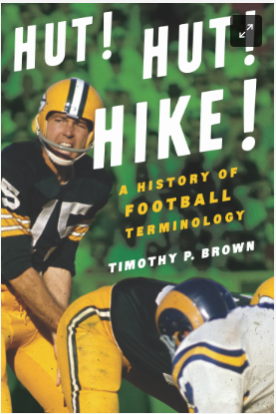The game of baseball has a long and storied history of its players, teams and managers. The stats, the championships, pitching duels and so much more make this one of the most interesting items to study and watch.
Sports History
Nellie Fox The Mighty Mite of the Second Base Diamonds
Early Innings (1947-1949):
-Fox began his professional career with the Philadelphia Athletics in 1947 at the tender age of 19. While success didn't come immediately, his exceptional eye at the plate and slick-fielding foreshadowed future greatness.
A White Sox Legend (1950-1965):
-Traded to the Chicago White Sox in 1950, Fox's career truly blossomed. He became a cornerstone of the team, earning eleven All-Star selections and winning the American League Most Valuable Player award in 1959.
-A master of contact hitting, Fox topped the league in batting average seven times, boasting a career average of .288. He was also a singles machine, leading the league in base hits eight times, a record only surpassed by Pete Rose.
-Defensively, Fox was a second-base wizard, winning three Gold Glove Awards for his exceptional fielding. His incredible reflexes and anticipation made him a nightmare for opposing baserunners.
A Glimpse into Ron Guidry's Electrifying Career
From Lafayette to the Big Leagues: Born and raised in Louisiana, Guidry showcased his talent early, leading his college team to victory before being drafted by the New York Yankees in 1971.
Dominating the Diamond: He debuted in 1975, quickly establishing himself as a force. In 1978, his legend soared: he won a staggering 25 games with only 3 losses, earning the Cy Young Award and propelling the Yankees to a World Series title.
More Than Just Wins: Guided by his exceptional control and devastating curveball, Guidry wasn't just a winner – he was a fan favorite. His aggressive pitching style and fiery spirit kept fans on the edge of their seats.
Five Gold Glove Awards: Beyond his pitching prowess, Guidry's fielding was exceptional, earning him five consecutive Gold Glove Awards, a testament to his well-rounded skill set.
Born August 28, 1950, in Lafayette, Louisiana, was legendary Baseball Pitcher , Ron Guidry. He was a four-time MLB All Star and won the Cy Young honors in 1978. Guidry pitched for the World Series Champion New York Yankees in 1977 and 78.
Leo Durocher Hall of Fame Shortstop
Lance Parrish A Look At His Baseball Legacy
Parrish's journey began with the Detroit Tigers in 1977. Quickly establishing himself as a force to be feared offensively, he earned six Silver Slugger Awards, highlighting his consistent power hitting. He clubbed over 300 home runs and drove in more than 1,000 runs throughout his career. However, Parrish was more than just a slugger. He also displayed a keen understanding of the game, calling pitches with intelligence and guiding young pitchers through their development.
Born June 15, 1956, in Clairton, Pennsylvania, was legendary MLB catcher Lance Parrish. Lance was a an eight-time All-Star, a three-time Gold Glove fielder, and won baseball's Silver Slugger award six-times.
He was a member of the Detroit Tigers organization for 10 seasons, even helping them to win the 1984 World Series. Parrish also played for the California Angels, Philadelphia Phillies, Pittsburgh Pirates, Cleveland Indians, and the Toronto Blue Jays at the latter portion of his career in the Big Leagues.
Defense was another hallmark of Parrish's game. His work ethic and dedication to his craft earned him three Gold Glove Awards. He was a master of game-calling, a skilled strategist who anticipated hitters' moves and orchestrated the defense accordingly. Parrish's ability to handle a potent pitching staff like the Tigers' in the early 1980s was crucial to their success.
Lance had 324 career Home Runs during his tenure in the MLB.
Ruth hits his final 3 HRs in Pittsburgh
WPXI.com remembers that Babe Ruth walloped his final three dingers at Forbes Field in Oakland on May 25, 1935.
Jim Bottomley and His Enduring Baseball Legacy
Born in 1898 in Illinois, Bottomley's path to baseball stardom began in the semi-professional leagues. His talent was evident, attracting the attention of St. Louis Cardinals scout Charley Barrett. Bottomley quickly rose through the minor leagues, showcasing impressive hitting skills and a natural feel for the game. He debuted with the Cardinals in 1922, immediately establishing himself as a reliable contributor.
Bottomley, a player who wasn't known for his power-hitting, displayed a remarkable consistency at the plate. He achieved a coveted feat – batting over .300 – an incredible nine times throughout his 16-year career. His on-base percentage was consistently high, and he possessed a knack for driving in runs, leading the league in RBIs twice. He held the single-game RBI record (12) for 69 years, a testament to his clutch-hitting ability and unwavering determination.
Bottomley's value extended beyond his statistics. His leadership and temperament were invaluable to the team, earning him the nickname "Sunny Jim" for his positive attitude on and off the field. He was a key component in the St. Louis Cardinals' championship runs, contributing to the team's success and fostering a respectful and positive team environment. He won two World Series titles with the team in 1926 and 1931.
In 1928, Bottomley's season was awe-inspiring. He led the National League in home runs, RBIs, and total bases, earning him the coveted MVP award. While his postseason numbers weren't as stellar, his regular-season dominance cemented his place among the league's elite.
Bottomley's career extended beyond the Cardinals. He played for the Cincinnati Reds and St. Louis Browns before retiring in 1937. After playing, he remained in baseball, serving as a scout and minor league manager for the Chicago Cubs organization.
Lefty Grove A Dominant Southpaw and Pitching Legend
Lefty Grove, born Robert Moses Grove in 1900, was a left-handed pitcher who dominated Major League Baseball for 17 seasons. He carved his legacy with the Philadelphia Athletics and Boston Red Sox, etching his name in baseball history as one of the greatest pitchers ever.
Early Career and Rise to Prominence:
After excelling in the minor leagues, Grove joined the Philadelphia Athletics in 1925. He quickly established himself as a force to be reckoned with, leading the American League in strikeouts seven years in a row from 1928 to 1934. His exceptional control, combined with a devastating fastball and a sharp curveball, made him a nightmare for opposing batters.
Peak Years and Championships:
From 1927 to 1933, Grove enjoyed his most dominant stretch. He won at least 20 games in each of those seasons, while leading the league in earned run average (ERA) five times. Notably, he achieved the prestigious "Triple Crown" twice during this period, leading the league in wins, strikeouts, and ERA. This feat cemented his status as one of the best pitchers of his generation.
Grove's contributions were instrumental in the Philadelphia Athletics' success. He helped them win two World Series titles in 1929 and 1930, showcasing his ability to perform under pressure on the biggest stage.
Summary
Lefty Grove was a Baseball Hall of Fame pitcher MLB All-Star on 6 different occasions, was on the World Series winning team 1929 and 30, won the AL MVP in 1931, and the Triple Crown in 1930 and 31.
Lefty played for both the Philadelphia A's and the Boston Red Sox.
Grove is one of the top MLB players to have worn Jersey Number 10.
Goose Gossage The Mustachioed Maverick Who Redefined Relief Pitching
A Fiery Fastball and Unwavering Grit: Drafted by the White Sox in 1970, Gossage's journey initially saw him bouncing between roles as starter and reliever. In the latter, he flourished, unleashing his signature heater – often exceeding 100 mph – and relying primarily on fastballs and a devastating slurve. While known for throwing at hitters, he only did it thrice intentionally.
From Chicago to Cooperstown: His dominance landed him in Pittsburgh, propelling him to stardom with the New York Yankees. With the Bronx Bombers, his fearlessness and late-inning heroics helped secure a World Series title in 1978. He continued his all-star caliber pitching, racking up saves for the Padres, Astros, and A's.
Born July 5, 1951, in Colorado Springs, Colorado, was Baseball Hall of Fame Relief Pitcher Rich "Goose" Gossage. Goose was a World Series Champion in 1978 as a member of the New York Yankees. In fact, he pitched for nine different teams, spending his best years with the Yankees and San Diego Padres.
Goose became perhaps one of the earliest versions of the prototypical modern-day clser, finishing off games with his signature fastball pitch. Gossage finished his MLB career as a nine-time MLB All-Star and a three-time AL saves leader. When he retired, he also ranked third in major-league career games pitched (1,002), and he remains third in wins in relief (115) and innings pitched in relief (1,5562⁄3); his 1,502 strikeouts place him behind only Hoyt Wilhelm among pitchers who pitched primarily in relief.
Joe Tinker Baseball Hall of Fame Shortstop
-Road to Baseball Greatness
Tinker's journey began in the minor leagues, where his defensive prowess at shortstop caught the eye of the Cubs. He made his major league debut in 1902 and quickly established himself as a reliable fielder, earning the nickname "Stonehands Tinker" for his fielding brilliance.
But Tinker's value extended far beyond his glove. He developed into a capable hitter, batting over .260 for his career. More importantly, he knew the game, calling pitches with intelligence and guiding young players on the field.
However, Tinker's legacy is forever intertwined with that of his teammates, Johnny Evers at second base and Frank Chance at first. Together, they formed one of baseball's most legendary double-play combinations. Their flawless coordination and slick-fielding became a nightmare for opposing teams, earning them a place in baseball folklore through the immortalized verse, "Tinker to Evers to Chance."
Tinker's time with the Cubs was marked by success. He secured four National League pennants and two World Series championships (1907, 1908). After stints with Cincinnati and Chicago again, he retired in 1916, leaving a lasting impact on the game.
Joe Tinker wasn't a headline-grabbing superstar but the quiet force behind a championship team. His defensive mastery, consistent hitting, and on-field leadership were instrumental in the Cubs' golden age. He remains a testament to the vital role of "glue guys" in building a winning team.
-Legacy of Tinker
Born July 27, 1880, in Muscotah, Kansas, was Baseball Hall of Fame Shortstop Joe Tinker. This legend was a member of the World Series Champion 1907 and 08 Chicago Orphans/Cubs, played with Cincinnati Reds for a year before a stint in the Federal League, leading the Chicago Whales to a title, and later returned to the MLB as the player-manager of the Chicago Cubs.
With the Cubs, Tinker was a part of a great double-play combination with teammates Johnny Evers and Frank Chance that was immortalized as "Tinker-to-Evers-to-Chance" in the poem "Baseball's Sad Lexicon". However, Evers and Tinker feuded off the field. Tinker was elected to the National Baseball Hall of Fame in 1946.
Phil Rizzuto NY Yankee Baseball Legend
February 7 Jersey Numbers

Here are some jersey numbers in team sport history that stuck out. February 7, 1949 - Number 5, Joe DiMaggio became the first ball player to earn $100,000 a yearas he did so under contract with the New York Yankees . February 7, 1958 - The Brooklyn Dodgers official...
- The use of a "banner" counts as 10 words!
February 6 Jersey Numbers
Sports history is made every day of the year. We will preserve at least a small sampling from some great athletes every day based on the uniform number they wore. 31 - 9 - 14 - 83 - 7 - 16 - 22 - 80 - 11 - 84 - 10 - 83 - 12 February 6, 1926 - St Louis Browns acquire catcher Wally Schang from ...
February 5 Jersey Numbers

Here is what happened in Sports Jersey History on February 5: Kareem hits a new NBA high, Hines hauls in a big one and Bob Douglas is honored. Our Sports Jersey Take of the Day is from historian Joe Ziemba. Listen in to learn more about sports history along with me from the unif...
- The use of a "banner" counts as 10 words!
The Oregon Agricultural Hard Court Stars
(image) Members of the 1922 Oregon Agricultural College men's basketball team. From left to rightː Gill (forward), Hjeite (enter), and Feraley (forward), from February 5, 1922. This image is courtesy of Wikimedia Commons. We know the OAC by a different name today, Oregon State. The Oregon Ag...
The 1897 Strathcona Hockey Team
.jpg?https://jerseydispatch.com/pfeL/p/c312642c0431e75b485e432232c99c1c/website/Sports-History-Photo-of-the-Day/February-Images/February-4-Image/images/.Strathconas_First_Hockey_Team_(21879505322).jpg)
Formal portrait of Strathcona's First Hockey Team (1897). Stratchcona resides in British Columbian Province, and is the oldest residential neighbourhood of Vancouver, (image) Some players are labeled by number. 1. Bob Blain 2. Jim Blain 3. Billy Sharkles 4. Fred Richards 5. J. McIn...
- The use of a "banner" counts as 10 words!
February 4 Jersey Numbers

Here is what happened in Sports Jersey History on February 4 : We talk about the great goaltending of Grant Fuhr and Ray Durbin of Row One Brand stops by to to discuss two of his favorite number 40s. Listen in to learn more about sports history along with me from the uniforms and jers...
- The use of a "banner" counts as 10 words!






